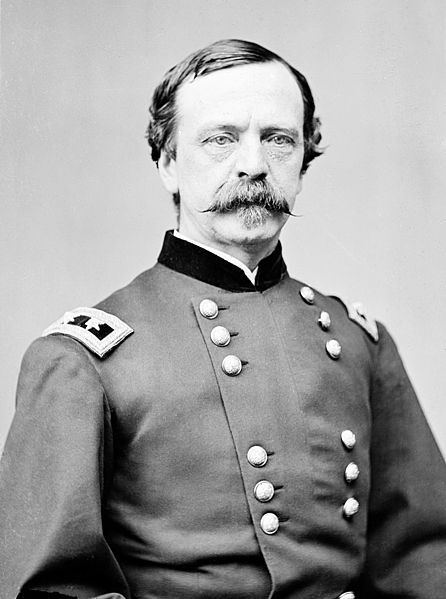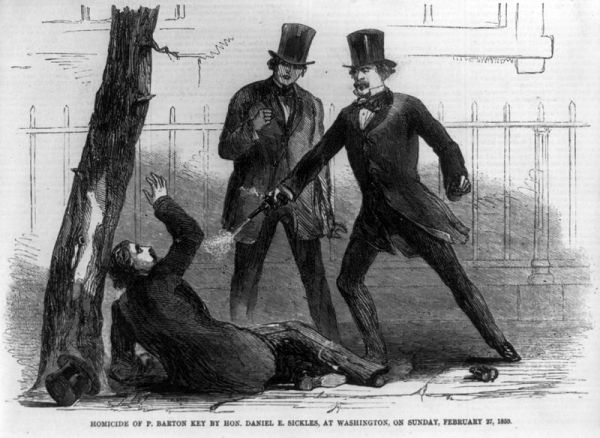by Eddie Deezen

I
thought the insanity defense was a relatively new thing. I mean, maybe
it began in the 1940's or possibly the '30’s, what with all the
psychobabble around in those times. But no. It was actually much
earlier.
It all started with a guy named Dan Sickles.
Dan
Sickles (1819-1914) was also a congressman who was known for a number of
things. As a union general in the Civil War. As a U.S. minister to
Spain. For being censured by the New York State Assembly for escorting
Fanny White, a known prostitute, into its chambers.
And, not the least, for being the first person to use temporary insanity as a legal defense.
In
1859, Sickles was accused of murdering his wife's paramour, Phillip
Barton Key. (Phillip was the son of Francis Scott Key- composer of “The
Star Spangled Banner.") After the murder, Sickles confessed and
surrendered himself to Attorney General Jeremiah Black at Black's home.

Sickles'
stay in jail was quite unusual. All of Washington society turned out to
visit him. Senators and congressmen came in and wished Sickles well.
President James Buchanan did not personally visit, but he sent Sickles a
personal note.
Continue reading
So many people came to see Sickles, he was given use of the head
jailer's apartment to welcome them. Also, even more incredibly, Sickles
was allowed to keep possession of his personal weapon while in jail!
Although
he confessed to the murder, at his trial, Sickles' lawyer claimed
Sickles was driven insane by his wife's infidelity. The newspapers
declared that Sickles was actually "protecting" other innocent women
from the evil lustfulness of Key.


Apparently, the jury swallowed
it- hook, line and sinker. Sickles was acquitted. And a legal precedent
of specious value entered our legal tomes of jurisprudence.
Sickles
went on to win the Congressional Medal of Honor for his acts of bravery
during the Civil War- for the fact that he got one of his legs blown
off during the battle of Gettysburg. He served as sheriff in New York in
1890.
Dan Sickles' very colorful life ended in 1914. He is buried in Arlington National Cemetery.
 I
thought the insanity defense was a relatively new thing. I mean, maybe
it began in the 1940's or possibly the '30’s, what with all the
psychobabble around in those times. But no. It was actually much
earlier.
I
thought the insanity defense was a relatively new thing. I mean, maybe
it began in the 1940's or possibly the '30’s, what with all the
psychobabble around in those times. But no. It was actually much
earlier.

No comments:
Post a Comment